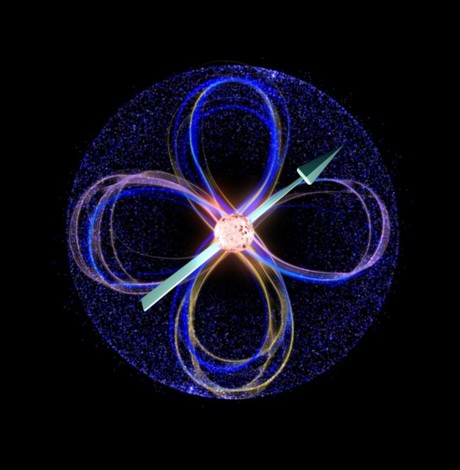The power of spin-orbit coupling in quantum computing

UNSW researchers are investigating multiple pathways to scale up atom-based computing architectures using spin-orbit coupling — advancing towards their goal of building a silicon-based quantum computer in Australia.
Spin-orbit coupling — the coupling of a qubit’s orbital and spin degree of freedom — allows the manipulation of the qubit via electric (rather than magnetic) fields. Using the electric dipole coupling between qubits means they can be placed further apart, thereby providing flexibility in the chip fabrication process.
In one of these approaches, scientists led by Professor Sven Rogge investigated the spin-orbit coupling of a boron atom in silicon.
“Single boron atoms in silicon are a relatively unexplored quantum system, but our research has shown that spin-orbit coupling provides many advantages for scaling up to a large number of qubits in quantum computing,” said Prof Rogge, Program Manager at UNSW’s Centre for Quantum Computation and Communication Technology (CQC2T).
Prof Rogge’s group has now focused on applying fast read-out of the spin state (1 or 0) of just two boron atoms in an extremely compact circuit all hosted in a commercial transistor. Their results were published in the journal Science Advances.
“Boron atoms in silicon couple efficiently to electric fields, enabling rapid qubit manipulation and qubit coupling over large distances,” Prof Rogge said. “The electrical interaction also allows coupling to other quantum systems, opening up the prospects of hybrid quantum systems.”
Another piece of research, led by Prof Michelle Simmons’ team at UNSW, has also highlighted the role of spin orbit coupling in atom-based qubits in silicon, this time with phosphorus atom qubits. The research revealed surprising results, which were published in the journal npj Quantum Information.
For electrons in silicon — and in particular those bound to phosphorus donor qubits — spin orbit control was commonly regarded as weak, giving rise to seconds-long spin lifetimes. However, the latest results revealed a previously unknown coupling of the electron spin to the electric fields typically found in device architectures created by control electrodes.
“By careful alignment of the external magnetic field with the electric fields in an atomically engineered device, we found a means to extend these spin lifetimes to minutes,” said Prof Simmons, CQC2T Director.
“Given the long spin coherence times and the technological benefits of silicon, this newly discovered coupling of the donor spin with electric fields provides a pathway for electrically driven spin resonance techniques, promising high qubit selectivity.”
Both results highlight the benefits of understanding and controlling spin orbit coupling for large-scale quantum computing architectures.
Please follow us and share on Twitter and Facebook. You can also subscribe for FREE to our weekly newsletter and bimonthly magazine.
Electronex Sydney a major success
More than 1000 trade visitors and delegates have attended the Electronics Design & Assembly...
Gartner: Global AI chips revenue to grow 33% in 2024
Gartner has forecast that the revenue from AI semiconductors globally will total $71 billion in...
Electronex Expo returns to Sydney for 2024
Electronex — the Electronics Design and Assembly Expo will return to Sydney in 2024,...





